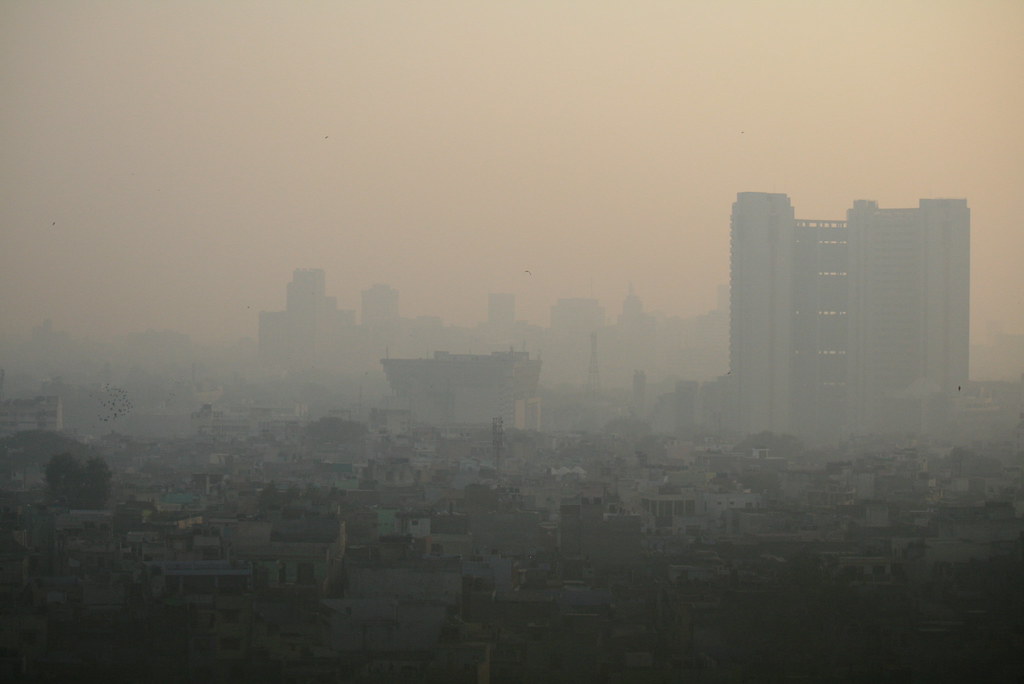The above Satellite Images show the extent of burning in Punjab, with wind directions revealing the root of Delhi’s hazardous air quality. It’s a complex puzzle to understand and solve.
In an effort to combat the city’s chronic air pollution problem, the Delhi Pollution Control Committee (DPCC) has mapped local pollution levels at 13 hot spots across the city around 103 critical sources. The hotspots were identified based on their consistently high levels of PM2.5 and PM10, which are fine particulate matter that can cause serious respiratory problems.
The mapping exercise has revealed a number of sources of pollution in these areas, including vehicular emissions, construction dust, and industrial emissions. These findings will be used to develop targeted action plans to reduce pollution levels in each hotspot.
The 13 pollution hotspots are Anand Vihar, Mundka, Wazirpur, Jahangirpuri, RK Puram, Rohini Punjabi Bagh, Okhla, Bawana, Vivek Vihar, Narela, Ashok Vihar, and Dwarka.
Major sources of pollution
Vehicular emissions constitute the largest single source of air pollution in Delhi, accounting for about 60% of the city’s PM2.5 emissions. Construction dust through Construction activities is a major source of dust pollution, especially during the dry season. Industrial emissions through Industrial activities, such as power generation and manufacturing, also contribute to air pollution in Delhi. Resuspended road dust is another major source of PM2.5 and PM10 in Delhi.
The DPCC is taking a number of steps to reduce pollution levels in the hotspots, including implementing stricter emission standards for vehicles, Enforcing dust control measures at construction sites, Promoting the use of cleaner fuels in industries and Improving road infrastructure to reduce congestion.
The mapping of pollution hotspots is a significant step forward in the fight against air pollution in Delhi. By understanding the sources of pollution in each area, the government can develop targeted and effective solutions.
“This is not a Delhi-specific problem. We need to improve our public transport system further in order to reduce the reliance on private vehicles and at the same time, improve Delhi’s cycling infrastructure. There also need to be restrictions on certain vehicle types which eventually encourages only net-zero emission vehicles,” said Amit Bhatt, Managing Director (India), of the International Council on Clean Transportation.
Is Stubble Burning the Reason?
A significant contributor to this alarming air quality is the practice of stubble burning in neighbouring Punjab.
Stubble burning, the act of setting fire to paddy straw residues after harvesting, is a common practice among farmers in Punjab. This method is considered a quick and inexpensive way to clear fields for the next crop cycle. However, the burning releases a significant amount of harmful pollutants into the atmosphere, including particulate matter (PM2.5 and PM10), carbon monoxide, and nitrogen oxides.
During the winter months, when wind patterns carry pollutants from Punjab towards Delhi, the impact of stubble burning becomes particularly severe. The smoke from burning fields traps cold air near the ground, creating a dense fog known as smog. This smog hangs over the city, reducing visibility and exacerbating respiratory problems.
Studies have shown that stubble burning can contribute up to 40% of Delhi’s PM2.5 pollution during peak periods. PM2.5, fine inhalable particles smaller than 2.5 micrometres in diameter, is considered the most dangerous air pollutant due to its ability to penetrate deep into the lungs and bloodstream.
Exposure to high levels of PM2.5 is linked to various health problems, including asthma, bronchitis, heart disease, and premature death.
Despite the recognized health and environmental hazards of stubble burning, the practice persists due to several factors. Farmers often lack access to affordable and efficient alternatives for managing paddy straw. Additionally, subsidies provided by the government for stubble management machinery have been inadequate.
To address the issue of stubble burning, a multi-pronged approach is needed. The government should provide financial incentives and subsidies for farmers to adopt alternative methods of straw management, such as baling, mulching, and composting.
Additionally, research and development efforts should focus on identifying and promoting sustainable straw utilization practices, such as using straw for biofuel production or animal feed.
Addressing the issue of stubble burning requires collaboration between the government, farmers, and the public. By working together, we can reduce air pollution and create a healthier environment for all.











